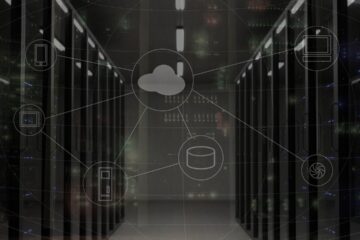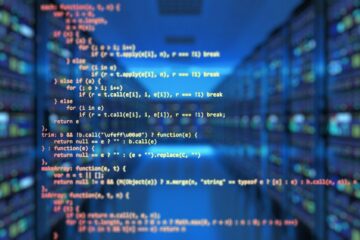![]()
Introduction:
An intermediary with respect to any electronic records is a person who on behalf of another person receives, stores or transmits that record or provides any service with respect to that record and includes telecom service providers, network service providers, internet service providers, web-hosting service providers, search engines, online payment sites, online auction sites, online market places and cyber cafe[1]. In simple terms, an intermediary is a medium which provides the platform to carry e-commerce (that is online buying and selling and auction of goods) and services related to electronic communication.
The intermediaries can be in the following forms:
- Internet Service Providers (ISP): help the users to get connected to the internet by means of wired or wireless connection[2]. The examples being Airtel, Reliance Jio, BSNL etc.
- Search Engines: Help users to search for specific information on the web and provide links to websites having content relevant to the search terms given by the user[3].
- DNS Providers: These service providers translate the domain names to addresses that can be understood by the computers[4].
- Web Hosts: these service providers provide space on server computers to place files for various websites so that these sites can be accessed by the users[5]. Eg: GoDaddy
- Interactive Websites: this includes social media sites like Facebook and Twitter that act as platforms to store and retrieve content, blogging sites like WordPress and auction sites like e-Bay etc[6].
- Cyber Cafes: are places where the owner offer access to internet in the ordinary course of business[7].
In Jitendra Singh Yadav v. Union of India[8], it was held that persons who or entities that collect sensitive personal information for the purpose of storing and disseminating them are also intermediaries.
The definition of intermediary before amendment of IT Act in 2008 was as follows: “ any person who on behalf of another person receives, stores or transmits that message or provides any service.” This is a narrow definition which highlights the limited scope of the intermediary in contrast to the present definition which broadens the scope and widens the number of entities coming under intermediaries.
Offences (Section 67A to 67C, IT Act, 2000)
The Internet web which unites the world around us can also serve as the origin of various crimes which violate the privacy of individuals. Thus, it becomes very important for the state to regulate the functions of the intermediaries as service providers in order to ensure that the rights of the users are not violated or abused. The IT Act, 2000 recognises and lists down the various offences committed in the virtual world from terrorism to pornography.
According to section 67A of the Act, the publication and transmission of any material containing sexually explicit content through electronic medium is punishable. The section makes it clear that upon first conviction, such offence shall attract imprisonment which shall extend to five years and imposition of fine which may extend to ten lakh rupees. Upon a second conviction, the term of imprisonment may extend to seven years and the fine amount may extend to ten lakh rupees.
Section 67B of the Act punishes publication or transmission of material depicting children in sexually explicit act in electronic form and reads as follows :
“ Whoever –
- publishes or transmits or causes to be published or transmitted material in any electronic form which depicts children engaged in sexually explicit act or conduct; or
- creates text or digital images, collects, seeks or browses, downloads, advertises, promotes, exchanges or distributes material in any electronic form depicting children in obscene or indecent or sexually explicit manner; or
- cultivates, entices or induces children to online relationship with one or more children for and on sexually explicit act or in a manner that may offend a reasonable adult on the computer resource; or
- facilitates abusing children online, or
- records in any electronic form own abuse or that of others pertaining to sexually explicit act with children,
shall be punished on first conviction with imprisonment of either description for a term which may extend to five years and with fine which may extend to ten lakh rupees and in the event of second or subsequent conviction with imprisonment of either description for a term which may extend to seven years and also with fine which may extend to ten lakh rupees:
Provided that the provisions of section 67, 67A and this section does not extend to any book, pamphlet, paper, writing, drawing, painting representation or figure in electronic form-
- the publication of which is proved to be justified as being for the public good on the ground that such book, pamphlet, paper, writing, drawing, painting representation or figure is the interest of science, literature, art or learning or other objects of general concern; or
- Which is kept or used for bonafide heritage or religious purposes.”
Accordingly, Section 67C of this Act provides for the preservation and retention of such information by the intermediaries. It states that the intermediary shall preserve and retain the information for a term and manner and format as laid down by the Central Government. If the intermediary fails to comply with the given provision, then the person shall be punished with imprisonment which may extend to three years and also made liable to pay the fine.
Exemption from Liability of Intermediary in Certain Cases
Liability of the intermediary for content transmission and posting through its service was first questioned in the US courts[9] and the point of contention was that whether newspapers or magazines which publish contents should be liable for violation of intellectual property rights in form of copyright infringement or civil or criminal defamation or should enjoy the immunity of the telephone company which is not made liable for any content transmitted or communicated through it. The California district court set up a precedent in the Netcom case[10] of 1995 and held that ISP (Internet Service Provider) is a passive service and like telephone company cannot be held liable for content transmitted through its service[11].
Models of Intermediary Liability
1. Strict Liability Model
Under this model, the intermediaries are held unconditionally and vicariously liable for all its user-generated content[12]. It makes mandatory for the intermediaries to regulate the content that is posted on their platforms and makes it convenient for the government to tackle and prevent any unlawful content from being circulated.
2. Broad Immunity Model
Under this model, the state recognizes that the intermediaries should be given conditional immunity from liability with respect to user-generated content and they are not legally required to monitor any content in their platform.
3. Safe Harbour Model
Under this model, conditional immunity is provided to the intermediaries from being held liable for the acts of third party users who use the infrastructure provided for illicit contents[13]. The immunities granted are subject to certain conditions as specified by law. It follows “notice and takedown” process which accepts the requests to take down a particular content. The intermediaries may be instructed to have content filters in place so as to avoid hosting or transmission of unlawful content[14].
Section 79 of the Act gives safe harbour protection to the intermediaries in India. The intermediary is a mere facilitator and does not participate in the modification or creation of any content or information. This provision was added to the Act by the Information Technology (Amendment) Act, 2008 on the demand of the software industry and industry bodies to have protection from liability that could arise because of user-generated content[15].
In Avnish Bajaj v. State[16], the Managing Director (MD) of Baazee.com was held liable for the sale of an obscene MMS clip that was put up by a third party user and criminal charges were laid down under IPC and IT Act, 2000. It was held that the MD was not liable as the company was not added as an accused either before the High Court and the Supreme Court. It was also noted that the companies cannot be made responsible if the uploaded content which escapes the filters put up in the first place to block them. this case recognised the need to expand the scope and meaning and protection given to the intermediary under IT Act, 2000 and accordingly the Amendment of 2008 expanded the definition and incorporated other necessary entities.
The amended Section 79 of the IT Act provides safe harbour for online intermediaries from “all unlawful acts” rather than only offence or contravention and incorporates the requirement for due diligence for claiming safe harbour. It is an exemption provision which provides conditional immunity to the intermediaries as long as they prescribe to the provisions/conditions of the section[17].
In Sheya Singhal v. Union of India[18], the Court held that “ Section 79[19] is valid subject to Section 79(3)(b)[20] being read down to mean that an intermediary upon receiving actual knowledge from a court order or on being notified by the appropriate government or its agency that unlawful acts relatable to Article 19(2) are going to be committed then fails to expeditiously remove or disable access to such material….”
Conclusion
In the ever-increasing era of internet and electronic communications, it becomes very necessary to balance the interests of both the users availing the services and the intermediaries providing the platform to avail such services. Thus, rules, regulations and legislation should ensure that an individual’s right to privacy, right to freedom of speech and expression and right to the internet are not violated keeping in line the interests of the intermediaries.
References:
[1] Section 2 (1) (w) of IT Act, 2000.
[2] Intermediaries, users and the law – analysing intermediary liability and the IT rules, (Jan 15, 2021, 5:44 PM), https://sflc.in/sites/default/files/wp-content/uploads/2012/07/eBook-IT-Rules.pdf .
[3] Ibid.
[4] Ibid.
[5] Ibid
[6] Ibid
[7] Ibid
[8] Feb 16, 2017, Madhya Pradesh High Court.
[9] Ashok Ram Kumar, Intermediaries under IT Act and IT (Intermediary guidelines) Rukes, 2011, (Jan 16, 2020, 12:35 PM), http://www.mcrhrdi.gov.in/FC2020/week11/Intermediaries%20edited.pdf .
[10] Religious Technology Centre v. Netcom On- line Communication Services Inc, 907 F.Supp. 1361 (N.D.Cal. 1995).
[11] Supra note 9.
[12] Diganth Raj Sehgal, Internet Intermediaries and Intellectual property : should we shoot the messenger,iPLeaders,(Sept29,2020,1:44PM),https://blog.ipleaders.in/internet-intermediaries-intellectual-property-shoot-messenger/ .
[13] Ibid.
[14] Ibid.
[15] Suraj, Liability of the Intermediaries under Information Technology Act, 2000, R&A Associates (Feb 23, 2017, 02:35 PM), https://rna-cs.com/liability-of-intermediaries-under-information-technology-act-2000/ .
[16] 150 (2008) DLT 769.
[17] Saumya Kapoor, Tracing the Development of Intermediary liability in India, Lexology (Jan 16, 2021, 02:59 PM), https://www.lexology.com/library/detail.aspx?g=be8df572-55b1-499a-85cf-8b44b59ee0bc.
[18] (2015) 5 SCC 1.
[19] Exemption of liability of intermediary from certain cases.
[20] upon receiving actual knowledge, or on being notified by the appropriate Government or its agency that any information, data or communication link residing in or connected to a computer resource controlled by the intermediary is being used to commit the unlawful act, the intermediary fails to expeditiously remove or disable access to that material on that resource without vitiating the evidence in any manner.



0 Comments